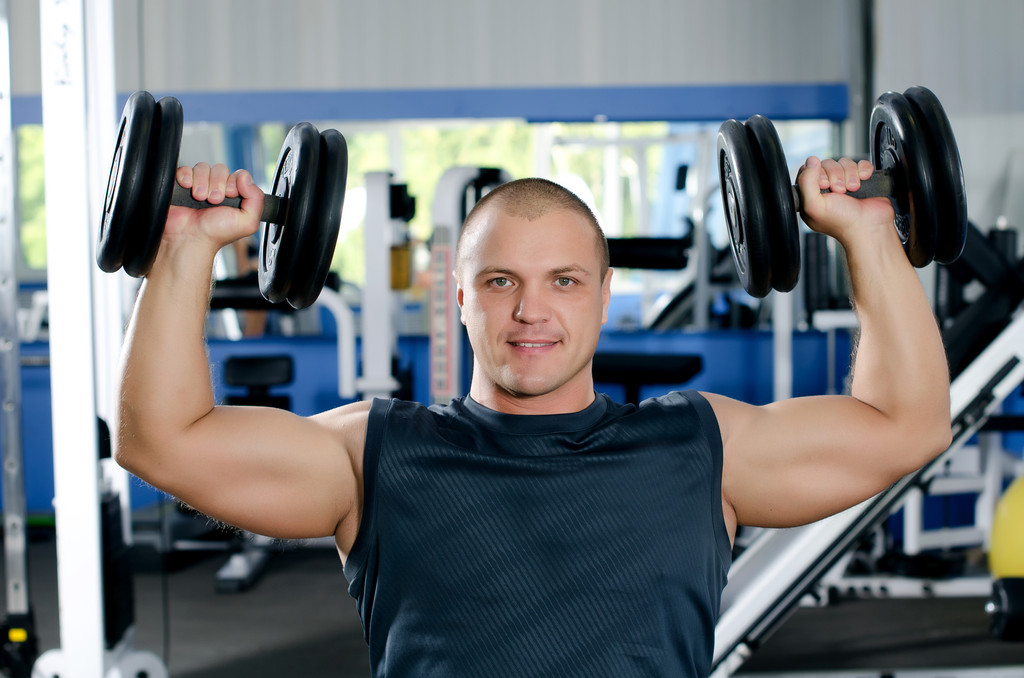Learn how to build strong and defined forearm muscles with this comprehensive step-by-step guide.
How to Build Forearm Muscles: A Step-by-Step Guide
Are you tired of having weak and flimsy forearms? Do you want to showcase those powerful Popeye-like muscles? Well, you’ve come to the right place! In this step-by-step guide, we’ll take you on a journey to building impressive forearm muscles that will make jaws drop. So, roll up your sleeves and let’s get started!

Understanding the Anatomy of the Forearm
Before we dive into the exciting world of forearm exercises, it’s essential to understand the anatomy of this incredible body part. The forearm is made up of various muscles that play a crucial role in both everyday activities and weightlifting.
When we think of the forearm, we often focus on its aesthetic appeal, but there is so much more to this part of our body. It is a complex structure that allows us to perform a wide range of movements with precision and control.
The forearm is composed of two bones, the radius and the ulna, which run parallel to each other. These bones provide the framework for the muscles and tendons that give the forearm its strength and flexibility.
The Role of Forearm Muscles in Daily Activities
Believe it or not, your forearm muscles are hard at work even during the simplest tasks, like opening a jar or typing on a keyboard. They provide stability and control for your wrists and fingers, allowing you to perform these actions effortlessly.
Imagine trying to open a tightly sealed jar without the strength and coordination of your forearm muscles. It would be nearly impossible to twist the lid off without their help. Similarly, when you type on a keyboard, your forearm muscles are responsible for the precise movements of your fingers as they press down on the keys.
Not only do these muscles assist in everyday activities, but they also play a vital role in sports and physical fitness. Whether you’re swinging a tennis racket, gripping a golf club, or lifting weights, your forearm muscles are working hard to provide the power and control you need.
Major Muscle Groups in the Forearm
Now, let’s talk about the superstar muscles that make up your forearms. We have the flexor and extensor muscles, which work together to control the bending and extending movements of your wrists and fingers. These muscles are responsible for that firm handshake you’ve always dreamed of!
The flexor muscles, located on the palm side of your forearm, are responsible for flexing your wrist and fingers. They allow you to make a fist, grip objects, and perform movements like curling your wrist towards your body.
On the other side, we have the extensor muscles, located on the back of your forearm. These muscles are responsible for extending your wrist and fingers, allowing you to open your hand, straighten your fingers, and perform movements like bending your wrist away from your body.
Both the flexor and extensor muscles work in harmony to provide the strength and control needed for various activities. They are often targeted in forearm exercises to improve grip strength, wrist stability, and overall forearm development.
It’s fascinating to think about the intricate network of muscles, tendons, and bones that make up our forearms. Without them, our hands would be mere appendages, lacking the dexterity and strength that we often take for granted.
So, the next time you engage in forearm exercises or perform everyday tasks that require the use of your hands, take a moment to appreciate the incredible anatomy of your forearms and the role they play in your daily life.
Importance of Building Forearm Muscles
Now that you understand the role and anatomy of your forearm muscles, let’s explore why it’s vital to build them up.
When it comes to fitness, many people focus on building their biceps, triceps, and chest muscles. However, they often overlook the importance of developing strong forearm muscles. Your forearms play a crucial role in various daily activities, from carrying groceries to gripping weights during workouts. Building forearm strength not only improves your physical appearance but also enhances your overall fitness and functionality.
Benefits of Strong Forearm Muscles
Strong forearm muscles offer a myriad of benefits. They improve your grip strength, making it easier to hold onto weights during workouts or carry heavy grocery bags. Whether you’re lifting dumbbells at the gym or performing pull-ups, having strong forearms allows you to maintain a secure grip, reducing the risk of dropping weights or losing control.
In addition to improving grip strength, strong forearms enhance your overall coordination and dexterity. When your forearms are well-developed, you can perform intricate movements with precision and control. This improved coordination not only benefits you in sports such as tennis, golf, or rock climbing but also in everyday activities like typing, cooking, or playing musical instruments.
How Forearm Strength Affects Overall Fitness
Your forearms are the unsung heroes of your body. While they may not receive as much attention as other muscle groups, building their strength is crucial for overall fitness. Strong forearms provide a solid foundation for other upper body exercises, allowing you to lift heavier weights and perform more challenging movements.
Furthermore, strong forearms play a vital role in injury prevention. During intense workouts, your wrists are often subjected to significant stress and strain. Weak forearms can lead to instability in the wrists, increasing the risk of injuries such as sprains or strains. By building forearm strength, you can stabilize your wrists, reducing the likelihood of these injuries and allowing you to push your limits safely.
Moreover, strong forearms contribute to better posture and alignment. When your forearm muscles are well-developed, they help support your wrists, which in turn improves your overall upper body posture. This improved alignment not only enhances your physical appearance but also reduces the risk of developing musculoskeletal imbalances or discomfort.
In conclusion, building forearm muscles is not just about aesthetics; it is essential for overall fitness and functionality. Strong forearms improve grip strength, coordination, and dexterity, benefiting you in both sports and everyday activities. Additionally, they provide a solid foundation for other upper body exercises and help prevent injuries by stabilizing your wrists during intense workouts. So, don’t neglect your forearms in your fitness routine – give them the attention they deserve and reap the numerous benefits they offer.
Preparing for Forearm Workouts
Now that you’re convinced of the awesomeness of forearm exercises, it’s time to prepare yourself for the journey ahead.
But before we dive into the nitty-gritty of forearm workouts, let’s talk about the importance of preparation. Just like any other fitness endeavor, it’s crucial to take certain safety measures into consideration.
Safety Measures to Consider
Like with any fitness endeavor, safety should always be your top priority. Before starting any forearm workouts, make sure to warm up properly, avoid overtraining, and listen to your body.
Warming up is essential to prepare your muscles and joints for the upcoming workout. You can start with some light cardio exercises, such as jogging or jumping jacks, to get your blood flowing and increase your body temperature. Dynamic stretches, like arm circles and wrist rotations, can also help loosen up your forearm muscles and improve their flexibility.
Another important aspect of safety is avoiding overtraining. While it’s great to be enthusiastic and dedicated to your forearm workouts, pushing yourself too hard can lead to injuries and setbacks. It’s important to find a balance between challenging yourself and allowing your body enough time to recover.
Listening to your body is perhaps the most crucial safety measure of all. Pay attention to any pain or discomfort during your workouts. If you experience any sharp or persistent pain, it’s essential to stop and seek professional advice. Ignoring pain can lead to further damage and hinder your progress in the long run.
Essential Equipment for Forearm Exercises
You don’t need a fancy gym or expensive equipment to build those forearm muscles. In fact, you can achieve fantastic results with just a few simple tools.
One of the most popular and effective tools for forearm exercises is a grip strengthener. These compact devices are designed specifically to target and strengthen your forearm muscles. They come in various resistance levels, allowing you to gradually increase the intensity of your workouts as your strength improves.
If you prefer a more versatile option, dumbbells are an excellent choice. They not only work your forearms but also engage other muscles in your arms and upper body. You can perform exercises like wrist curls, hammer curls, and reverse curls to target different areas of your forearms.
Resistance bands are another fantastic tool for forearm workouts. They provide constant tension throughout the movement, challenging your muscles in a unique way. You can wrap the band around your fingers or wrists and perform exercises like finger extensions and wrist rotations to strengthen your forearms.
Remember, the key is to choose equipment that suits your preferences and goals. Whether you opt for grip strengtheners, dumbbells, or resistance bands, consistency and proper form are the most important factors in achieving results.
Step-by-Step Guide to Forearm Exercises
It’s time to get down to business! Here’s a step-by-step guide to help you build powerhouse forearms.
Warm-Up Exercises for the Forearm
Before diving into intense forearm exercises, it’s crucial to warm up properly. Start with simple stretches and rotations to loosen up your wrists and forearms. This prepares the muscles for the upcoming workout and helps prevent injuries.
Beginner’s Guide to Forearm Strengthening
If you’re new to forearm training, fret not! We’ve got you covered. Begin with basic exercises like wrist curls and reverse wrist curls. Aim for moderate weights and focus on maintaining proper form throughout each repetition. Remember, Rome wasn’t built in a day, and neither will your forearms be!
Advanced Forearm Strengthening Techniques
Are you ready to take your forearm game to the next level? Once you’ve built a solid foundation, challenge yourself with more advanced exercises like farmer’s walks and hammer curls. These exercises target multiple forearm muscles simultaneously and push your limits, resulting in incredible gains!
Maintaining Your Forearm Strength
Building forearm muscles is an ongoing journey, and it’s crucial to maintain your hard-earned gains.

Tips for Consistent Forearm Training
Consistency is key when it comes to preserving and improving your forearm strength. Make forearm training a regular part of your workout routine and set specific goals to keep yourself motivated. Celebrate your progress along the way, and remember, perseverance pays off!
Dealing with Common Forearm Injuries
While we always strive for injury-free training, accidents can happen. If you encounter any forearm injuries, it’s essential to seek appropriate medical attention and follow the prescribed treatment plan. Allow yourself time to heal and ease back into your training when you’re ready.
In Conclusion
Congratulations! You’ve now traversed the exciting world of forearm muscle building. By understanding the anatomy, importance, and tips for training, you’re well-equipped to embark on your journey to powerful Popeye-like forearms. Remember to stay consistent, listen to your body, and have fun along the way. Get ready to flex those muscles and show the world what you’re made of!







